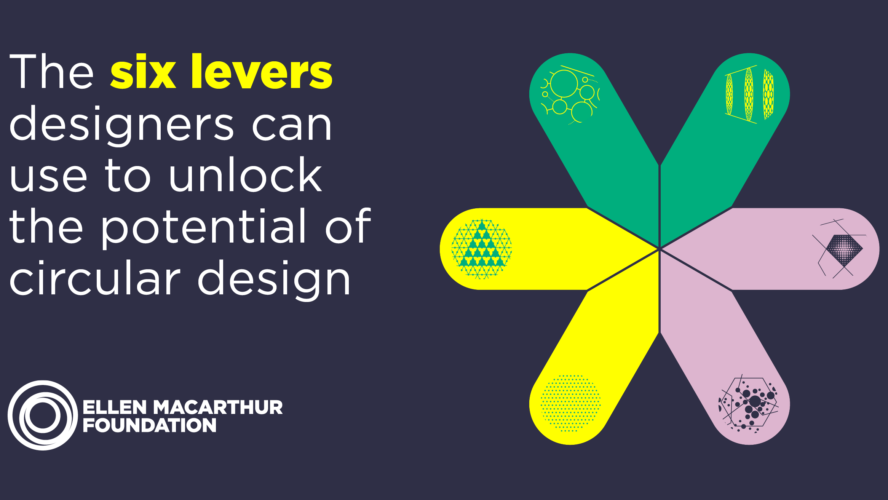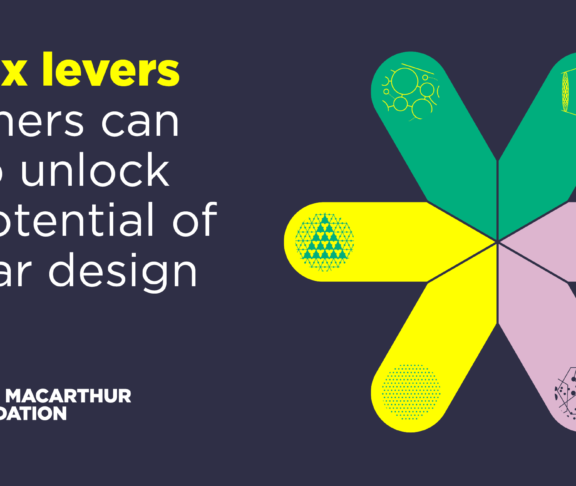
Joe Iles
Circular Design Programme Lead, Ellen MacArthur Foundation
There’s a quote that summarises the sometimes elusive realm of design well. Carl Steinitz, of Harvard University’s Graduate School of Design, likes “to think of design as a verb as the asking of questions, and design as a noun as the character of the answers.“
Many of us intuitively have a good idea of what ‘design’ is and how it manifests. We can see it in the products and services around us: the clothes we wear, buildings we live and work in, and the systems we use to buy groceries, communicate, and travel. These things are often useful, make our lives easier, safer, or more enjoyable. Maybe they look good, too. That’s design, isn’t it?
But what about the many people who worked together to create those products and services? They used their knowledge, skills, tools, and methods – through countless hours of collaboration and problem solving – to create those clothes, buildings, and supermarkets. That process – that’s also design.
So when we talk about design that incorporates the principles of a circular economy – what I call ‘circular design’ – we must consider it as a verb, as well as a noun.
The latter is becoming more well known. The ‘character of the answers’, as Steinitz puts it, might involve products that are durable, modular, repairable, and able to be disassembled. It might involve smart material choices; fewer materials that are easy to separate and come from renewable or regenerative sources. It might involve a business model that enables assets to stay in use for longer, through rental, sharing, refill, or return.
Yet circular design as a verb remains relatively unexplored. This must be addressed, as it will be the organisations that have a holistic circular design strategy that will be able to most effectively develop and scale such radical new concepts.
So what can designers – of all types – do differently to rethink the design process for a circular economy?
From speaking with leading designers from influential brands, we believe there are six leverage points that can create space for circular design.
Firstly, interpret the system. Locating an organisation, material, or asset within a wider context can reveal the most impactful opportunities or intervention points to begin shifting from linear to circular.
Secondly, envision circular futures. To avoid simply patching up a flawed linear system, it’s crucial to imagine something different: a circular, regenerative future.
Thirdly, create conditions for collaboration. Create the space for actors to use their strengths to work on complex issues, and support them as they discover new avenues and actions to shift the system at different scales.
The fourth leverage point is to build internal capabilities. Developing understanding across the organisation, building new capabilities, teams, departments and roles to ensure a mindset shift takes place at all levels and divisions.
Fifth, designers need to set the rules. Establish rules of the game that make it easier to incorporate the principles of a circular economy in new products and services.
And sixth, use tools to create and evaluate. From idea generation, to concept development, all the way through to performance measurement, using the right tools helps create outcomes aligned with the circular economy objectives of an organisation.
Thanks to growing theoretical understanding, corporate mission statements and targets, and a number of leading examples, we increasingly know what design for a circular economy looks like. To turn ambition to action, and rethink every aspect of our economy, now we need the act of circular design to become the new normal.


